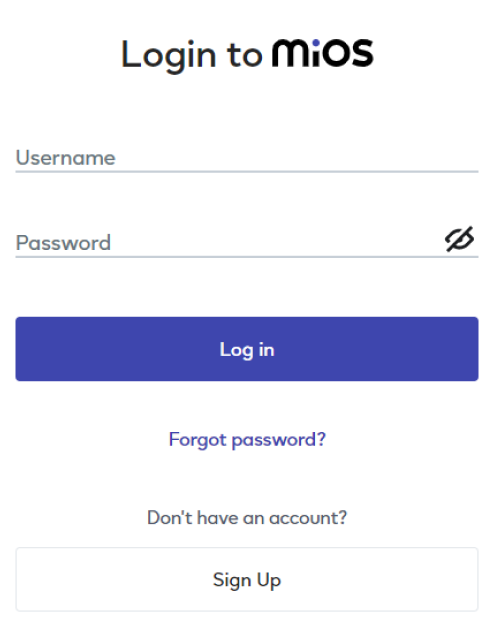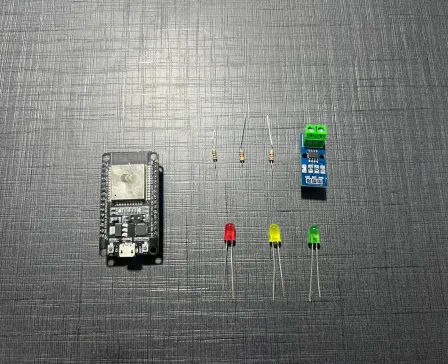
Smart implementation with EzloPi
Visual current monitoring using LEDs
The EzloPi smart devices provide automation through simple, customizable use with our open-source EzloPi platform, making daily life easier and improving human-machine interactions.
Before moving into this example, it is very important to know about the device registration, provisioning and converting the ESP32 device into an EzloPi device along with knowledge of Web Flasher, MiOS Mobile Application for Android/iOS and the MiOS Web Application.
1. About this example
This project utilizes the ACS712TELC-05B current sensor module interfaced with the EzloPi device to measure real-time current flow in a circuit. The ACS712 provides precise analog current readings, which are processed by the EzloPi to trigger visual indicators. LEDs are used as visual cues to represent different current levels—such as green for normal operation, yellow for warning thresholds, and red for overcurrent conditions. This setup ensures an intuitive, real-time monitoring system for electrical loads, offering a simple yet effective solution for current visualization and fault detection.
3. Circuit Diagram & Interface
The following components are required for interfacing with the EzloPi device:
- ESP32 as an EzloPi smart device.
- ACS712TELC-05B current sensor module.
- 3 LEDs with 120 Ohm resistors.
The wiring diagram of ESP32 30 pin is represented as follows:
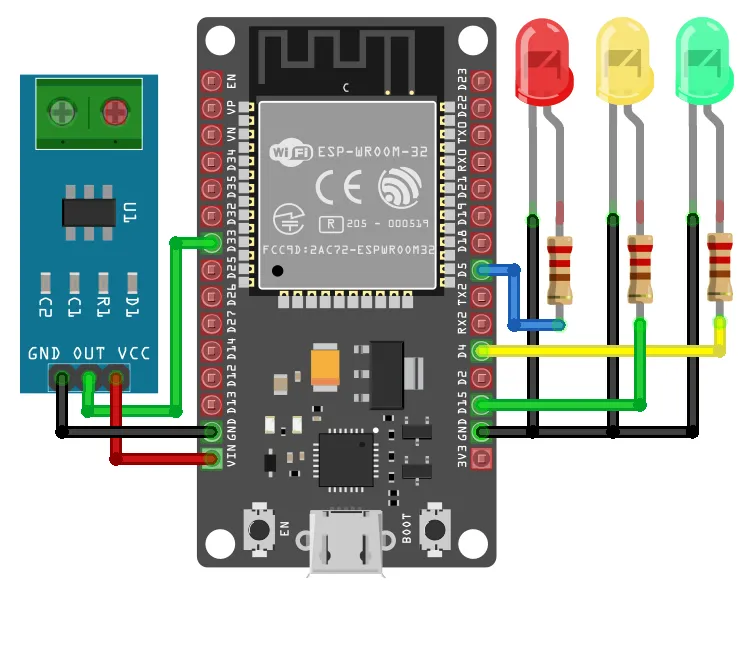
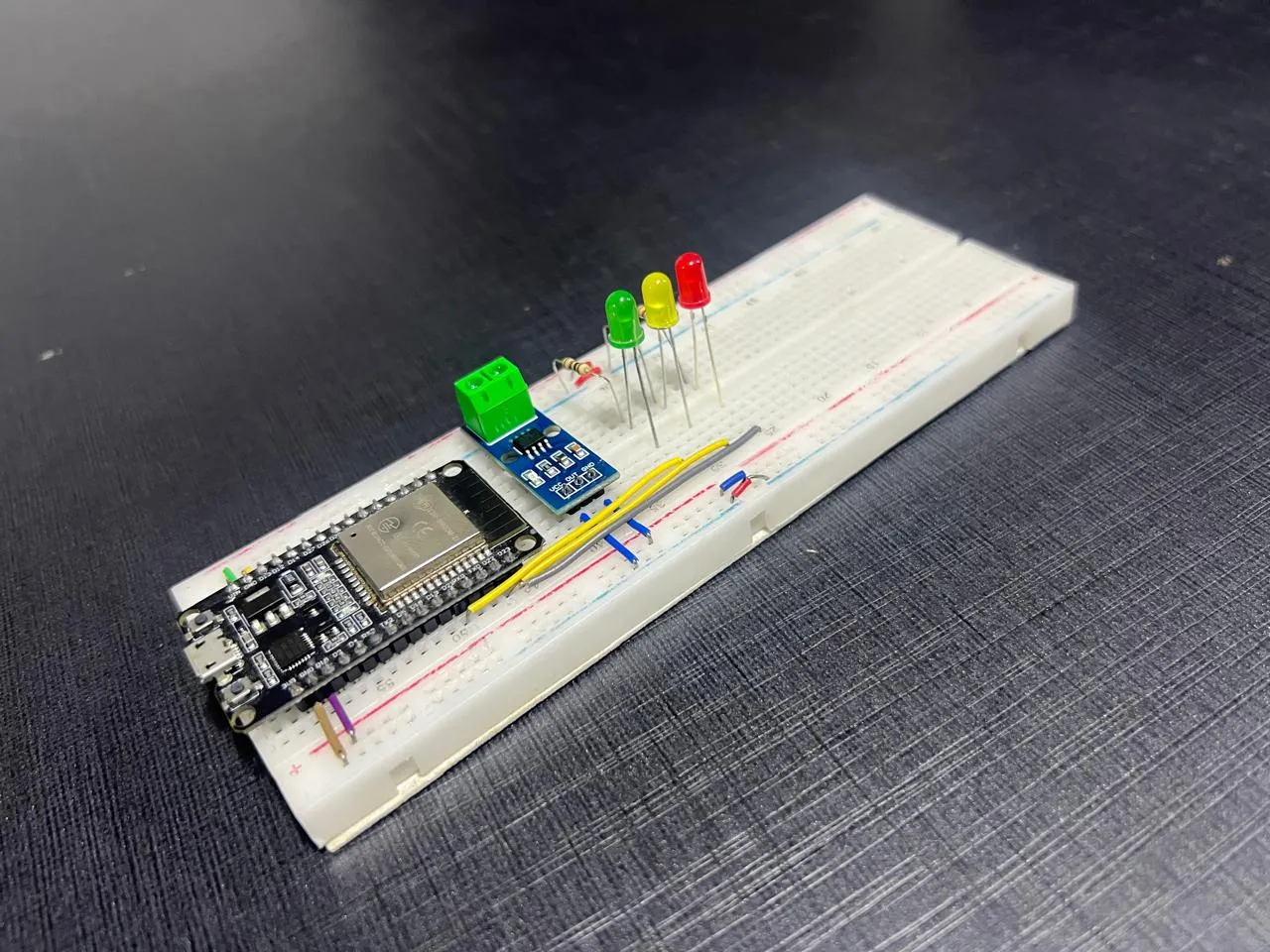
The following connections are made in order to complete the circuit setup.
From ESP32 to the ACS712 Current sensor:
| ESP32 | ACS712 |
| VCC | VIN |
| GND | GND |
| OUT | D33 |
From ESP32 to the LED1 & Resistor1:
| ESP32 | LED1 | Resistor1 |
| D15 | - | Terminal 1 |
| GND | Cathode | - |
| - | Anode | Terminal 2 |
From ESP32 to the LED2 & Resistor2:
| ESP32 | LED2 | Resistor2 |
| D4 | - | Terminal 1 |
| GND | Cathode | - |
| - | Anode | Terminal 2 |
From ESP32 to the LED3 & Resistor3:
| ESP32 | LED3 | Resistor3 |
| D5 | - | Terminal 1 |
| GND | Cathode | - |
| - | Anode | Terminal 2 |
4. Interfacing the CS712 Current Sensor & 3 LEDs with the EzloPi Web Flasher:
1. Set up your device/hardware by visiting config.ezlopi.com
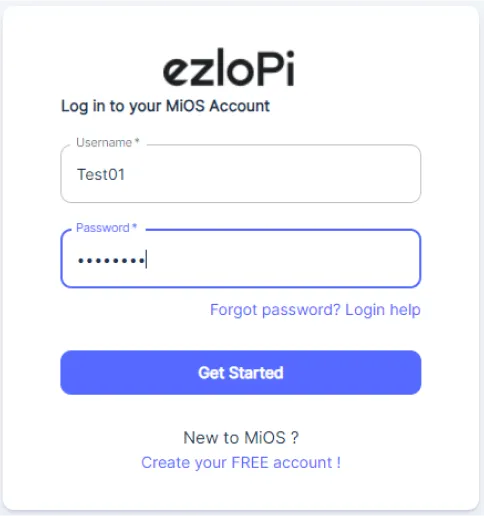
- Log in using the credentials which you just set earlier while signing up.
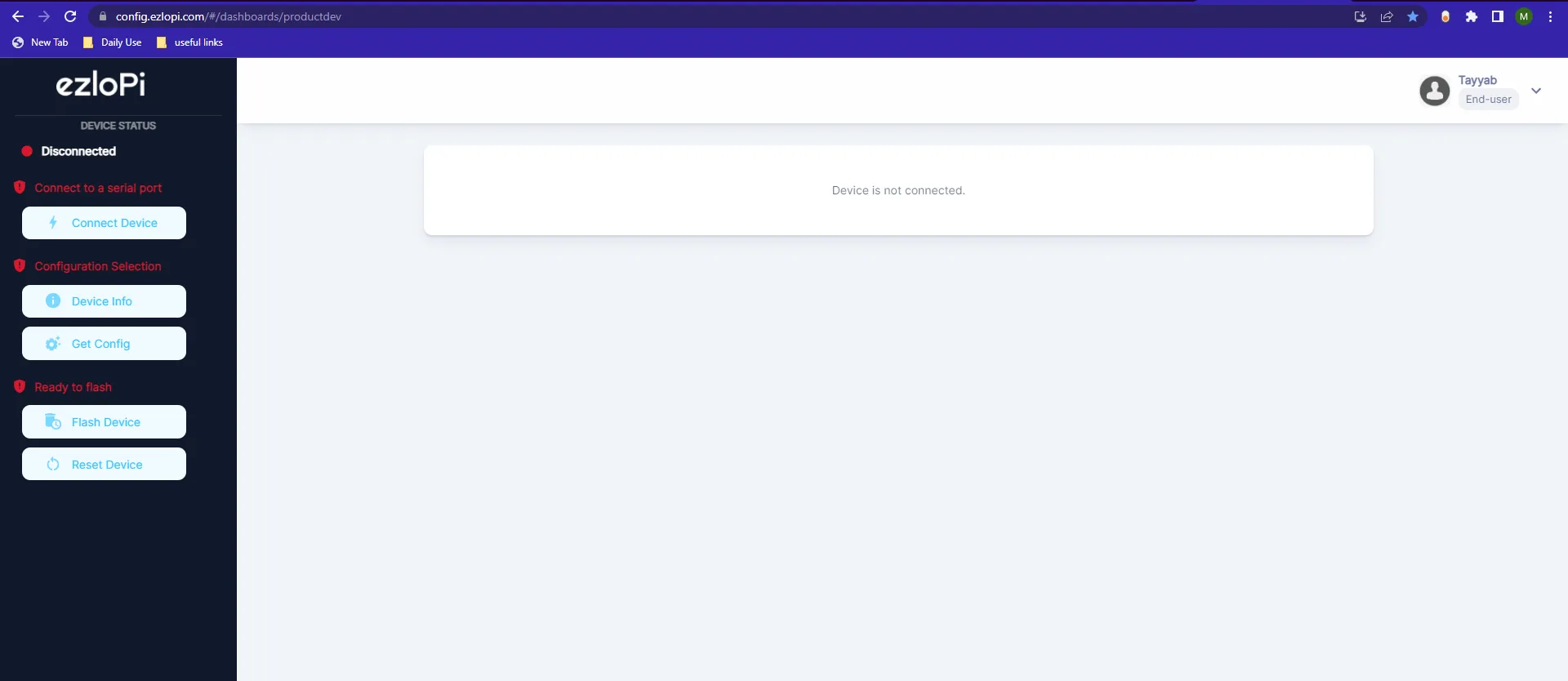
- Now, click on the Connect Device button and a pop-up window will appear.
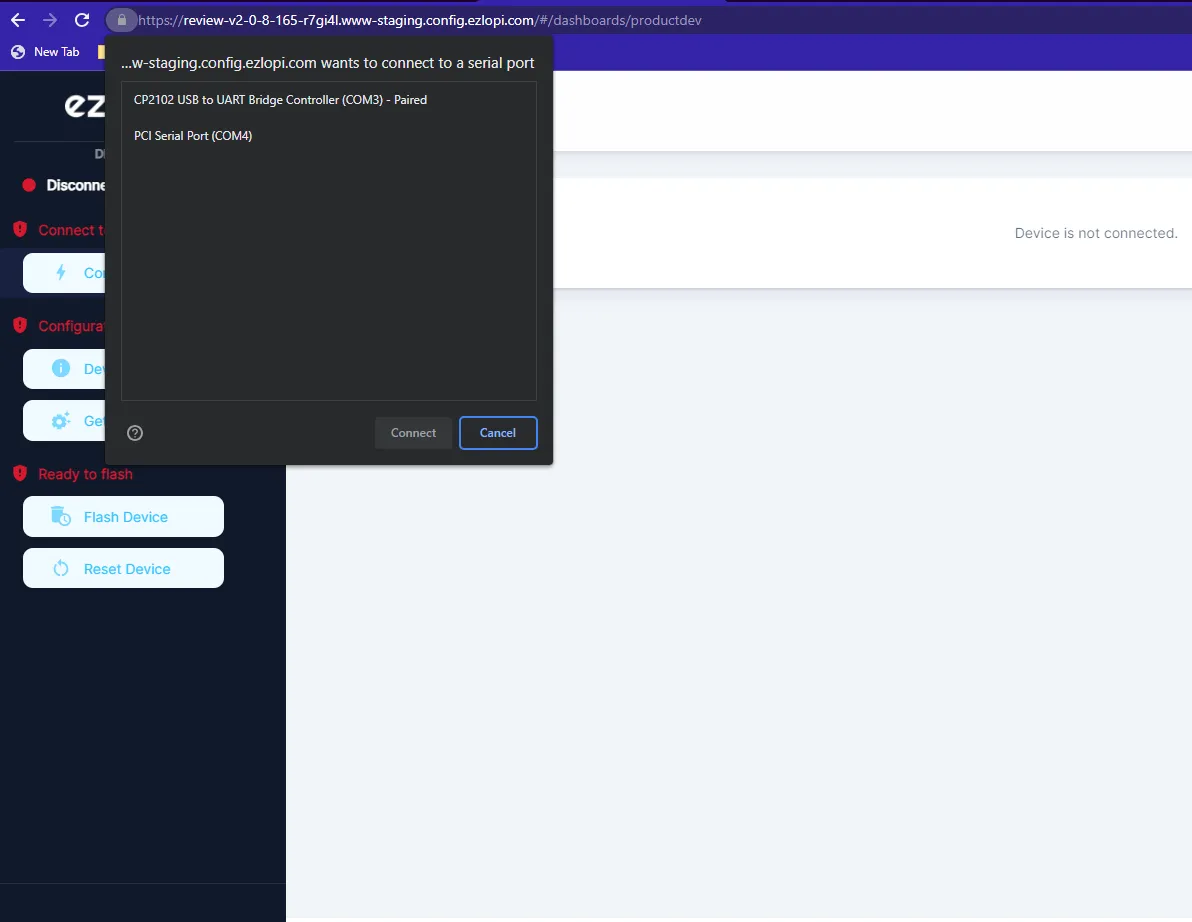
- Now, select COM Port to which your ESP32 device is connected. In our case, the COM3 port is used.
Click Connect
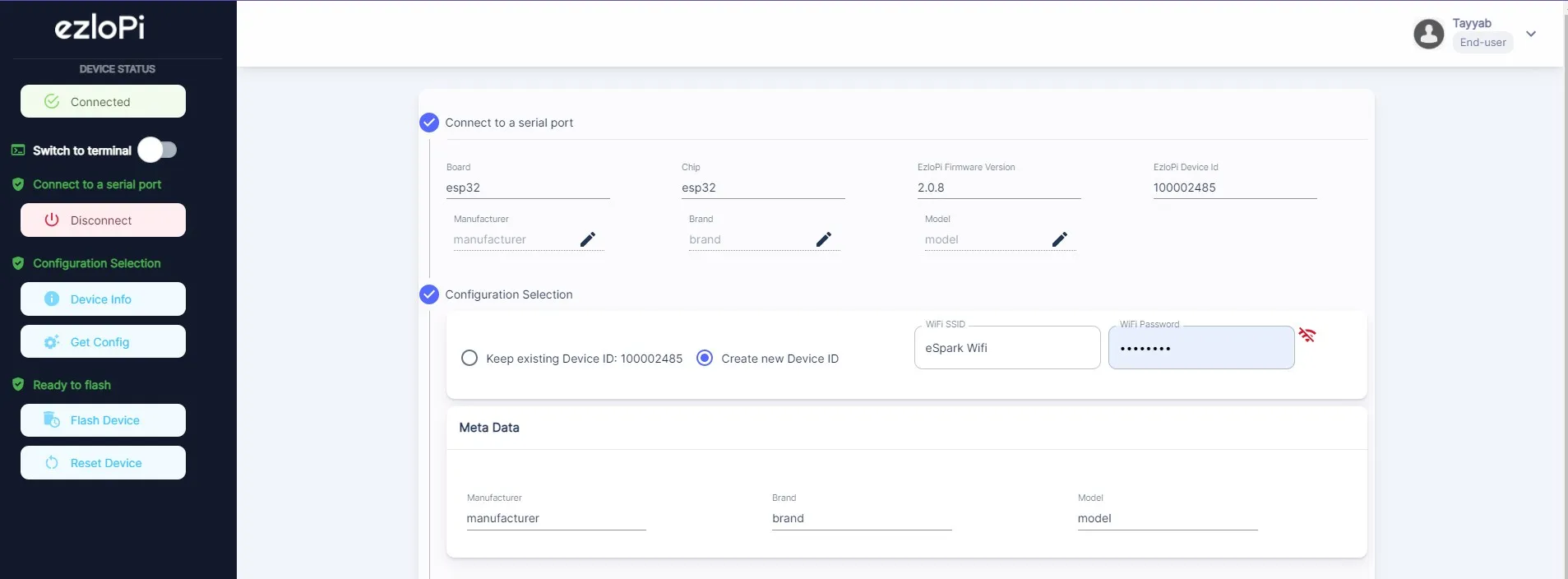
- If you are new to this and it's your first time configuring, select Create new Device ID. Enter Wifi SSID and Wifi Password.
- In the Device Configuration, tab click on Analog Input.
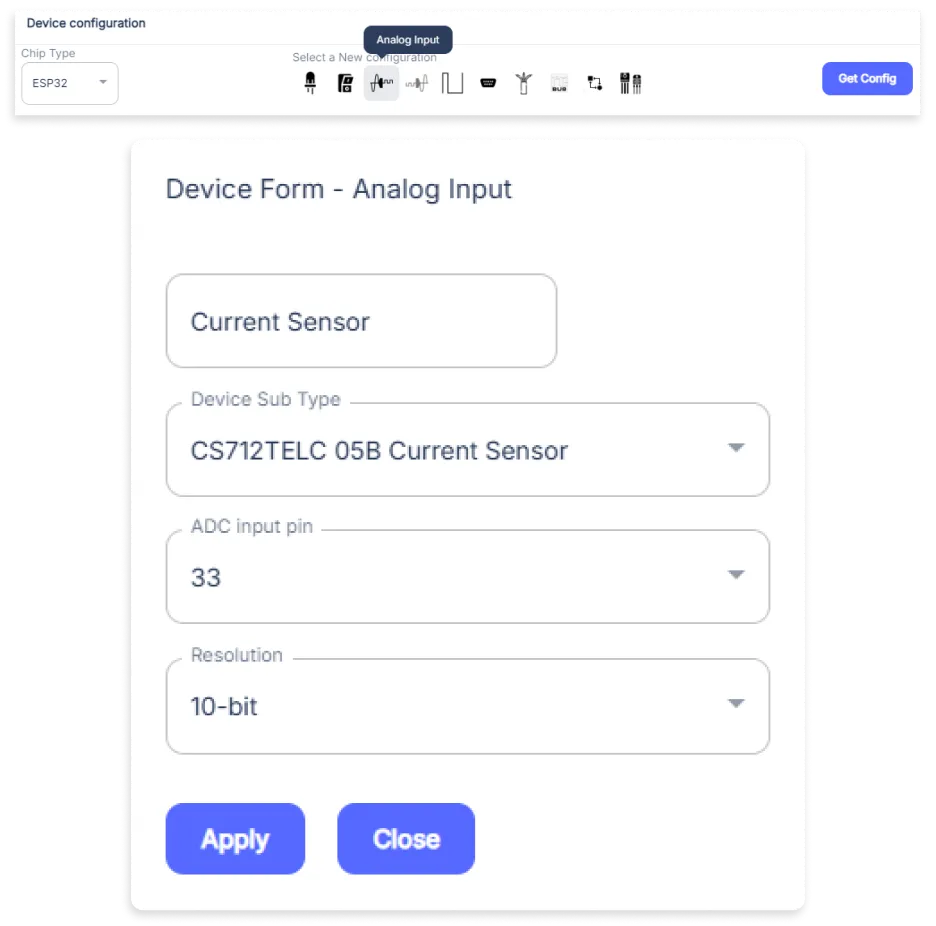
- An Analog Input window will open for inputting the following parameters:
- Set a Device Name of your choosing. In our case, we set it to Current Sensor.
- Set Device Subtype to CS718TELC 05B Current Sensor.
- Set the ADC input pin to 33.
- Set the Resolution to 10-bit.
- Then Click Apply Button.
- Again, In the Device Configuration, tab click on Digital Output
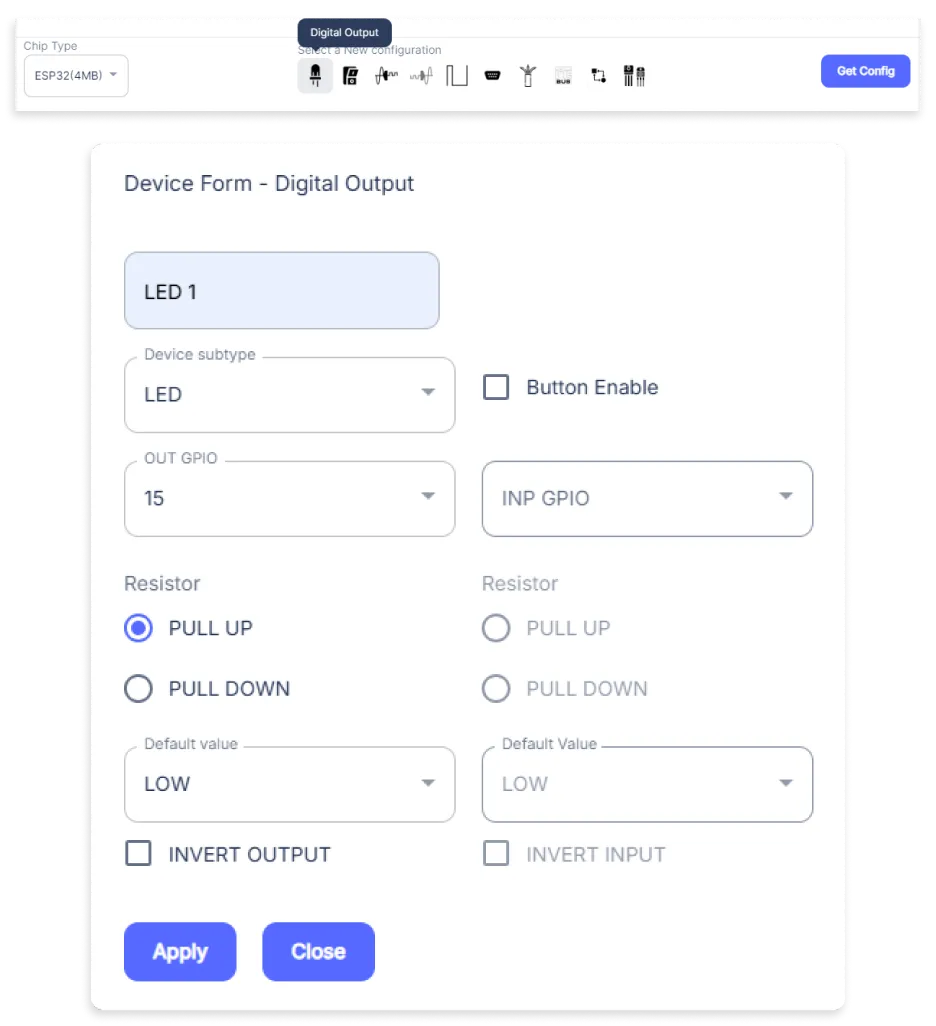
- A Digital Output window will open for inputting the following parameters:
- Set a Device name of your choosing. In our case, we set it to the LED 1.
- Set Device Subtype to LED.
- Set the OUT GPIO to 15.
- Set the Resistor to PULL UP.
- Then Click Apply Button.
- Again, In the Device Configuration, tab click on Digital Output.
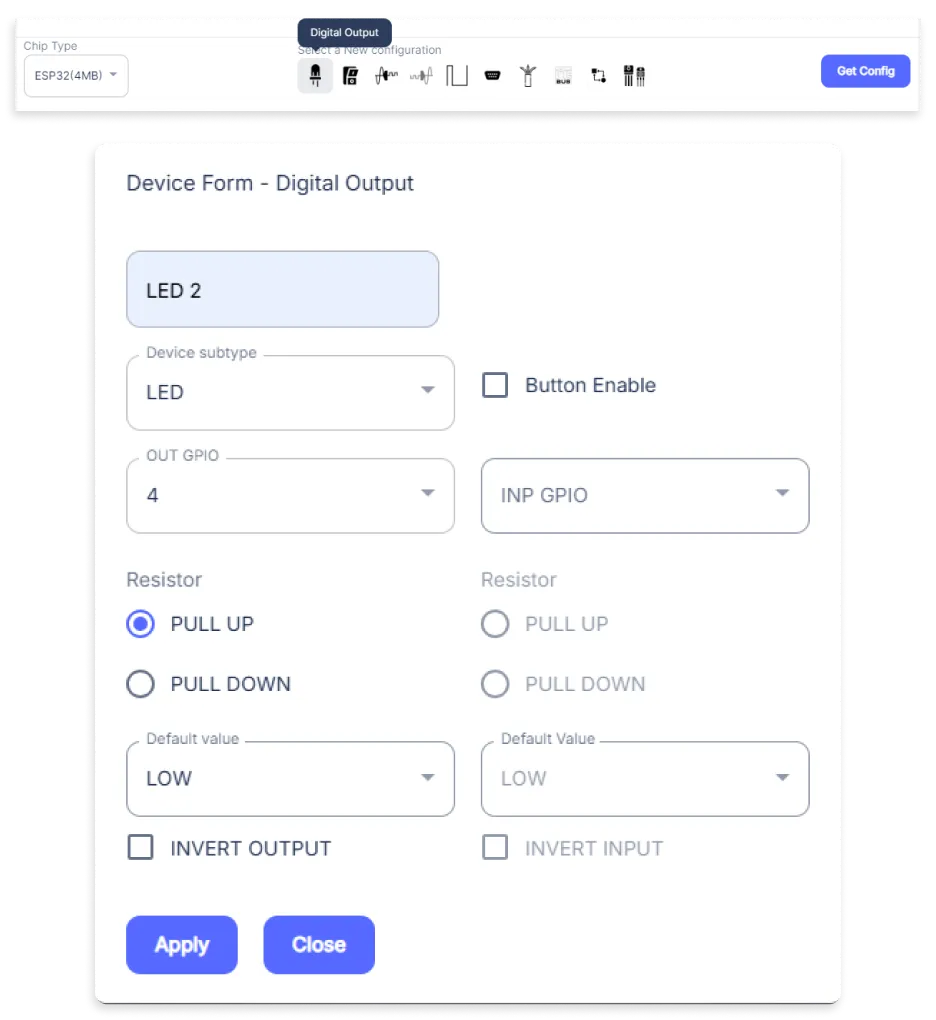
- A Digital Output window will open for inputting the following parameters:
- Set a Device name of your choosing. In our case, we set it to the LED 2.
- Set Device Subtype to LED.
- Set the OUT GPIO to 4.
- Set the Resistor to PULL UP.
- Then Click Apply Button.
- Again, In the Device Configuration, tab click on Digital Output.
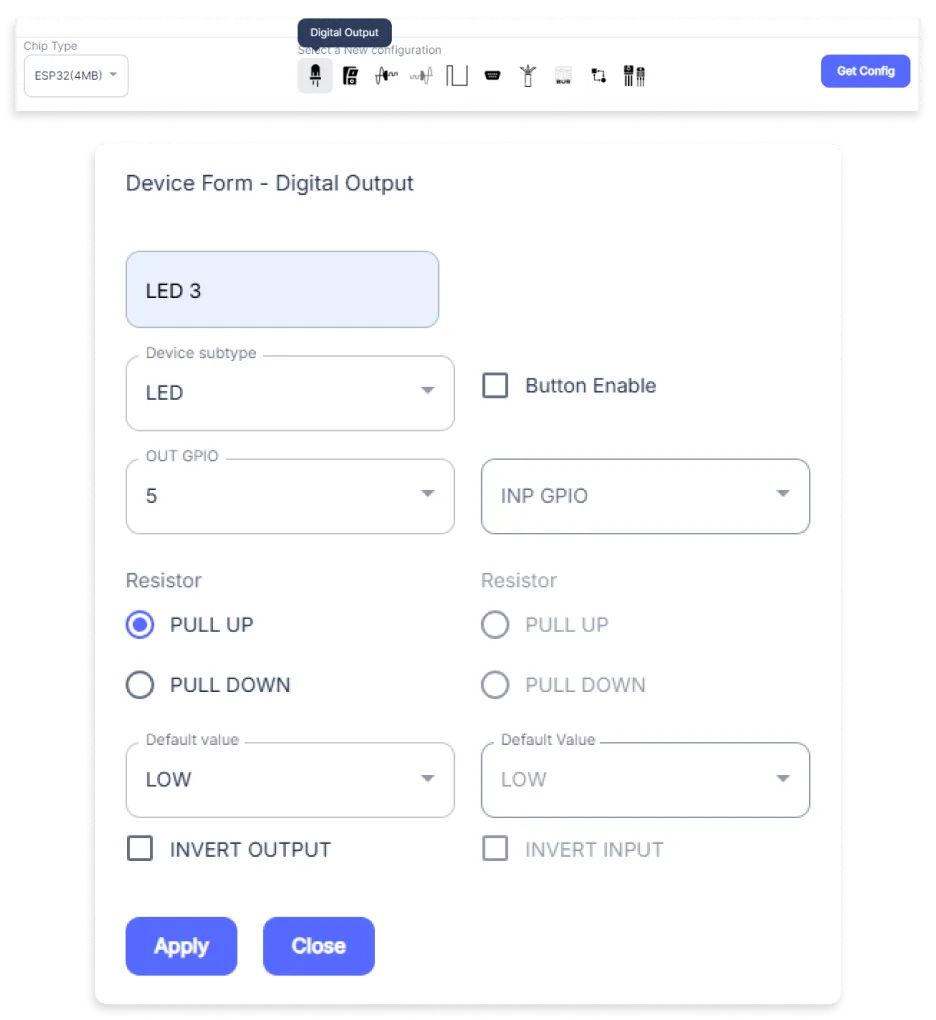
- A Digital Output window will open for inputting the following parameters:
- Set a Device name of your choosing. In our case, we set it to the LED 3.
- Set Device Subtype to LED.
- Set the OUT GPIO to 5.
- Set the Resistor to PULL UP.
- Then Click Apply Button.
- After clicking the apply button you can see a table of your setting in the device configuration tab.
- Now press the Flash Device Button.
- A window will appear on the bottom right side of the screen displaying “Please press BOOT button while flashing begins.”
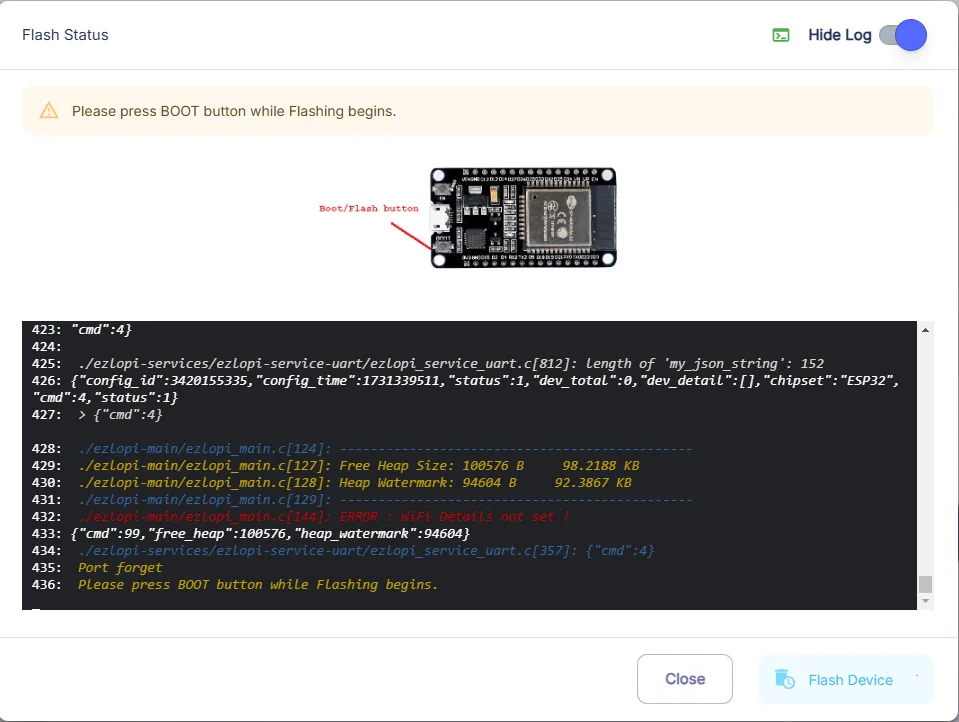
- Hold the BOOT button down until the next window appears on the bottom right side of the screen which says “Installation prepared. Please release the boot button now.”
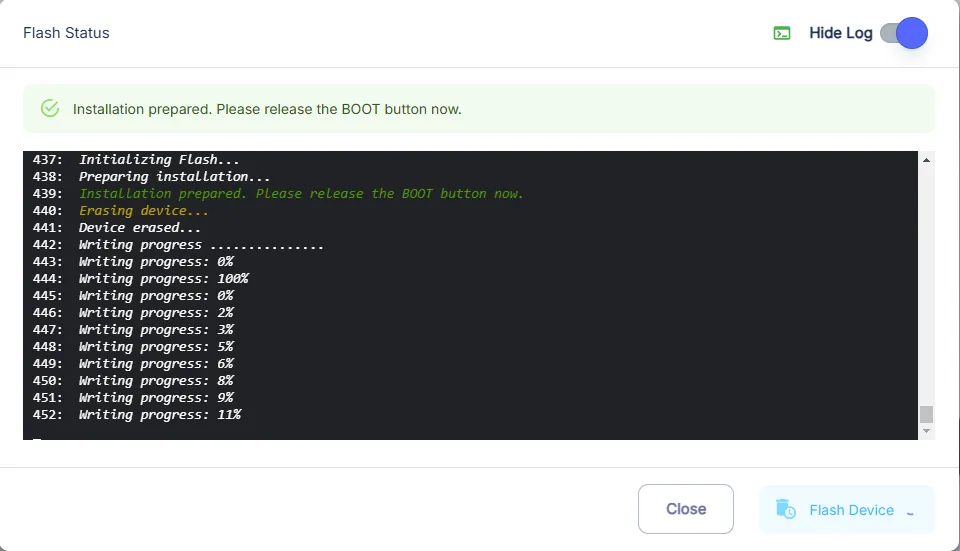
- Release the BOOT button from your ESP32 when this pop-up on the bottom right window appears.
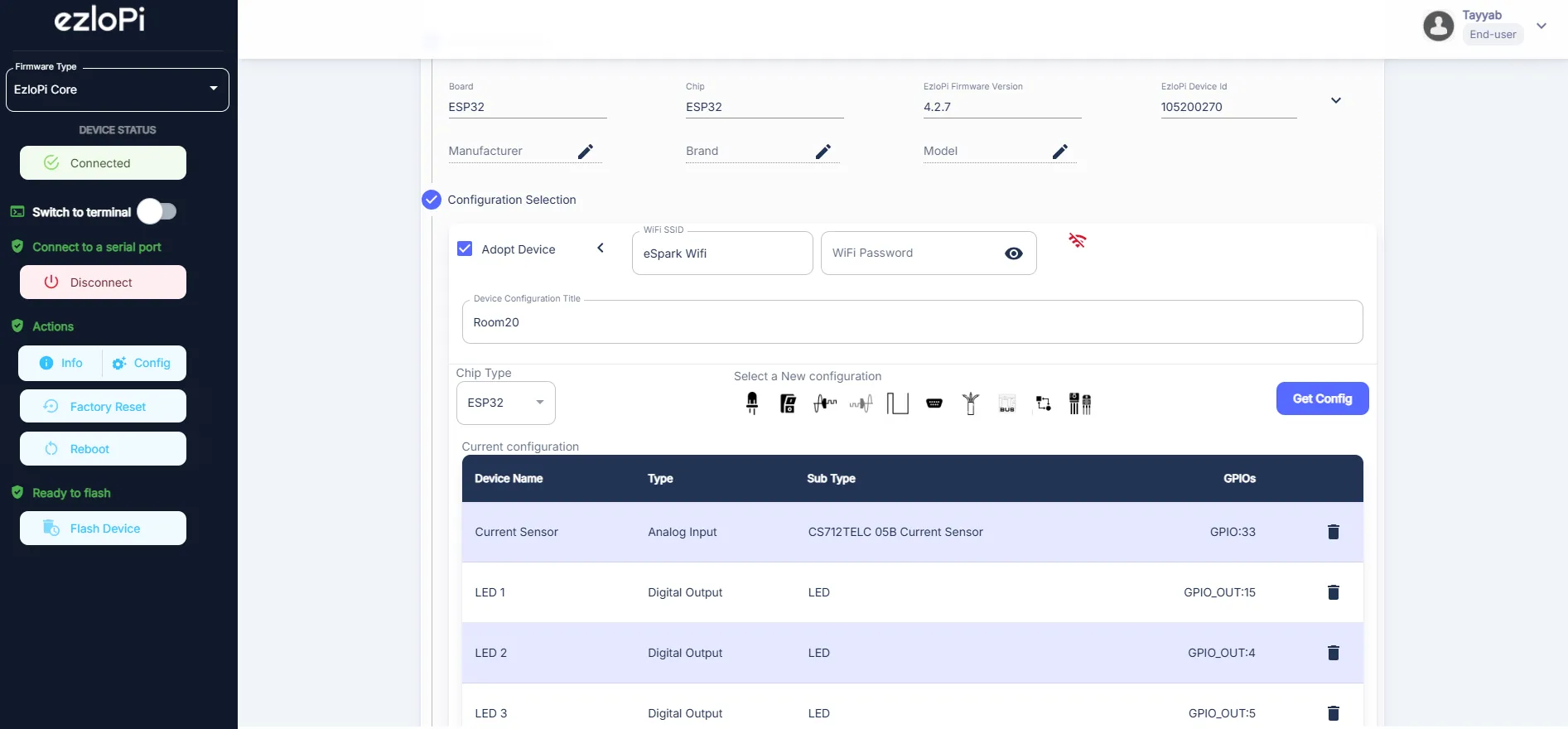
- After some time, a popup will appear saying Device Flashed Successfully! This means that your device has been set up successfully.
5. MiOS Web Dashboard
- After configuring the controller with the EzloPi web flasher, head to ezlogic.mios.com
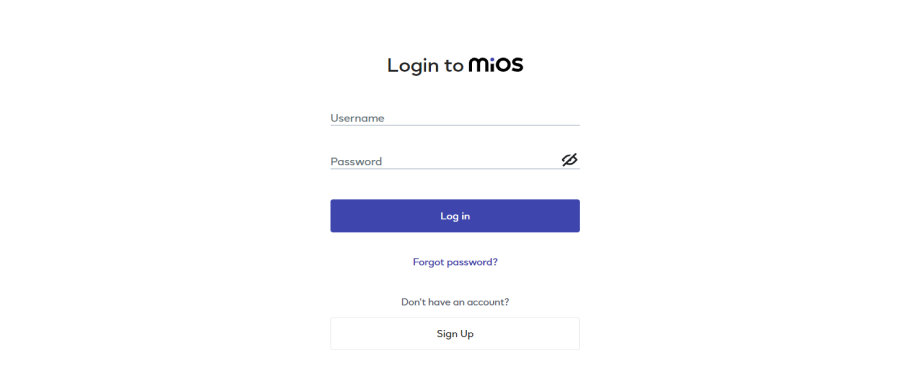
- Use the same credential to log in that you used for configuring the controller with the web flasher.

- On the MiOS web dashboard, you will be able to see the tiles of connected devices. In our case, we have tiles for the current sensor and three tiles for LEDs to indicate different levels of current being measured.
MeshBots:
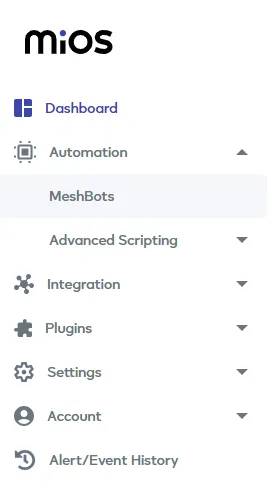
- On the left side of the screen under Automation, click on MeshBots.
- On meshbot screen, click on Create new MeshBot button present on the top right corner of the screen.
- After clicking on Create new MeshBot, you will see this now under Automation MeshBot click on Cloud.
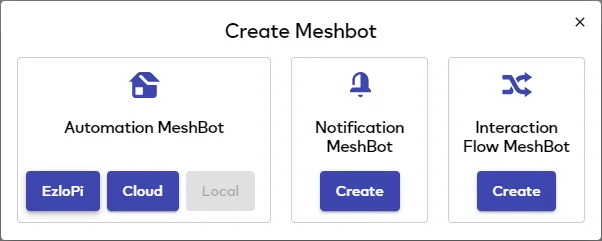
- On the next screen you will see that we can create a name of our choosing, in this case we write it as Test011.
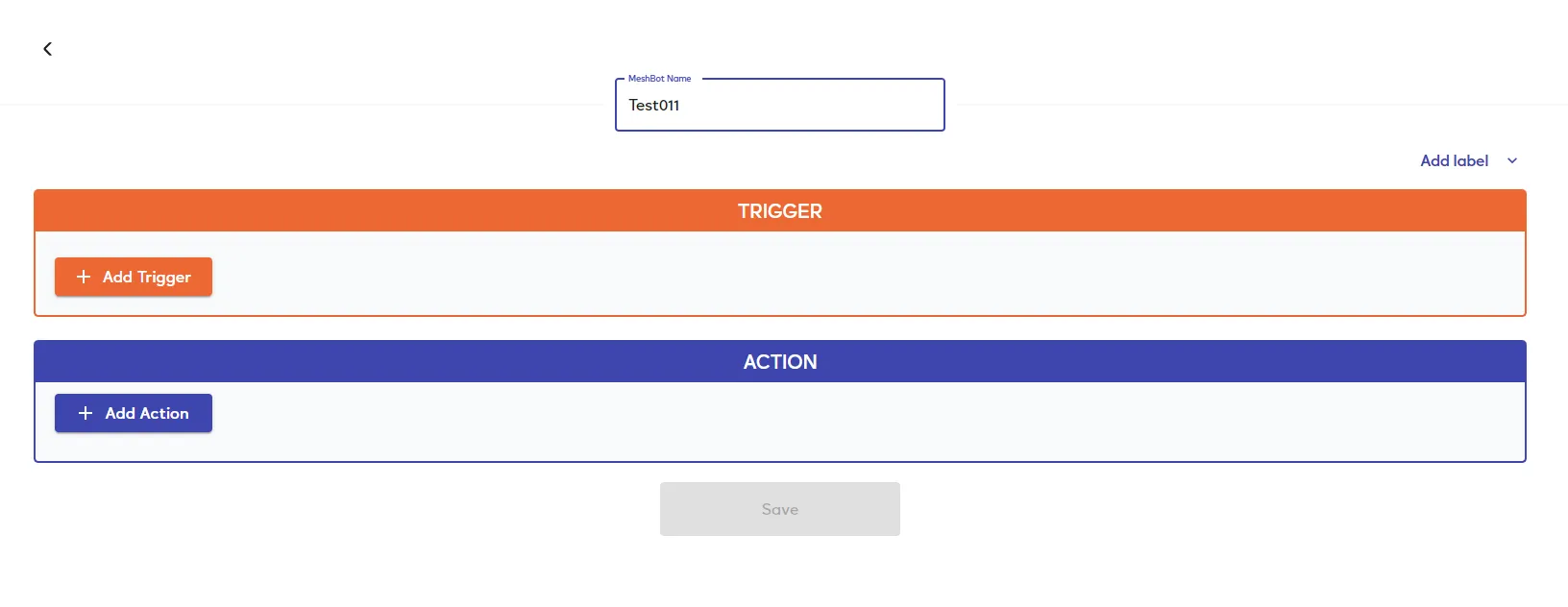
- In the trigger tab you can set the TRIGGER for your device and in the ACTION tab you can set the action to be performed based on the trigger which you have created.

- Set these things in TRIGGER section:
- Set Node Type to Device.
- Set the Node to Current Sensor.
- Set the Capability to parent_abstract.
- Set the variables to uuid.
- Set the Comparator to Greater (>).
- Set the Value Type to value.
- Set the value to 0.1.
- Set these values in the ACTION section.
- Set Controllable Type to Device.
- Set the Controllable to LED 1.
- Set the Capability to power_command.
- Set the Value Type to set.
- Set the value to true.
- Again Click on Create new Meshbot and under Automation MeshBot click on Cloud.
- On the next screen you will see that we can create a name of our choosing, in this case we write it as Test012.
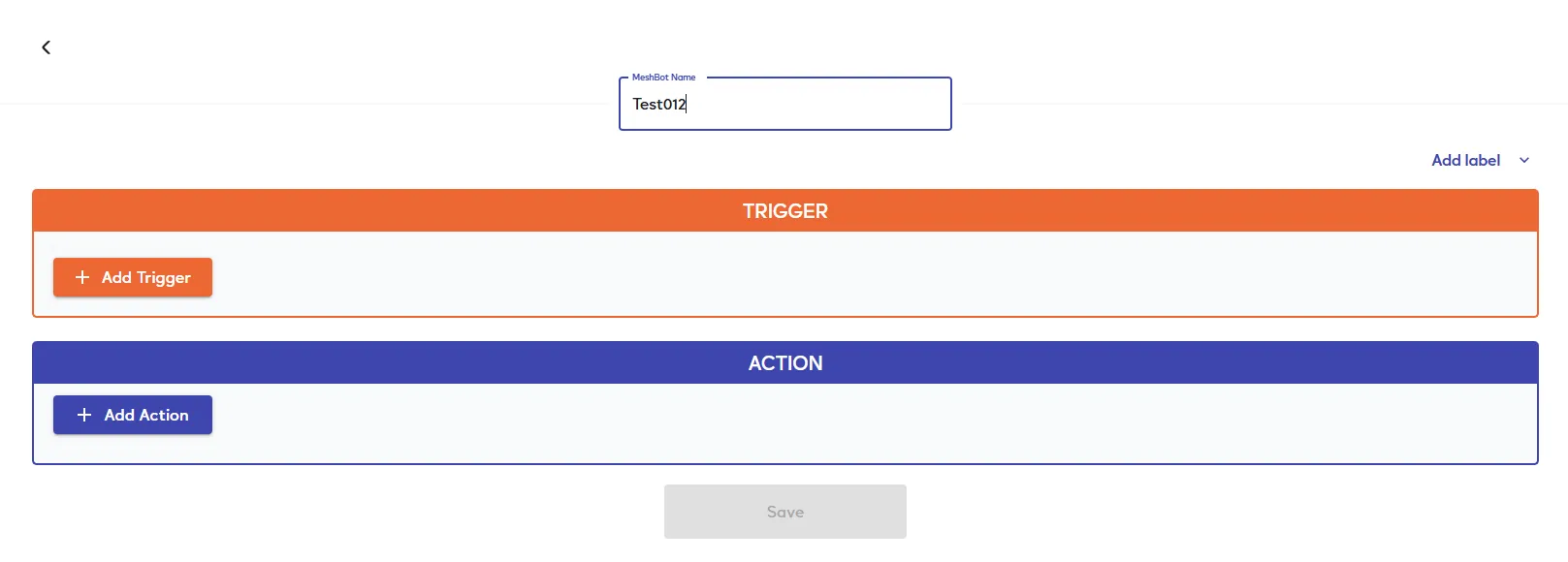
- In the trigger tab you can set the TRIGGER for your device and in the ACTION tab you can set the action to be performed based on the trigger which you have created.

- Set these things in TRIGGER section:
- Set Node Type to Device.
- Set the Node to Current Sensor.
- Set the Capability to parent_abstract.
- Set the variables to uuid.
- Set the Comparator to Greater (>).
- Set the Value Type to value.
- Set the value to 0.2.
- Set these values in the ACTION section.
- Set Controllable Type to Device.
- Set the Controllable to LED 2.
- Set the Capability to power_command.
- Set the Value Type to set.
- Set the value to true.
- Again Click on Create new Meshbot and under Automation MeshBot click on Cloud.
- On the next screen you will see that we can create a name of our choosing, in this case we write it as Test013.
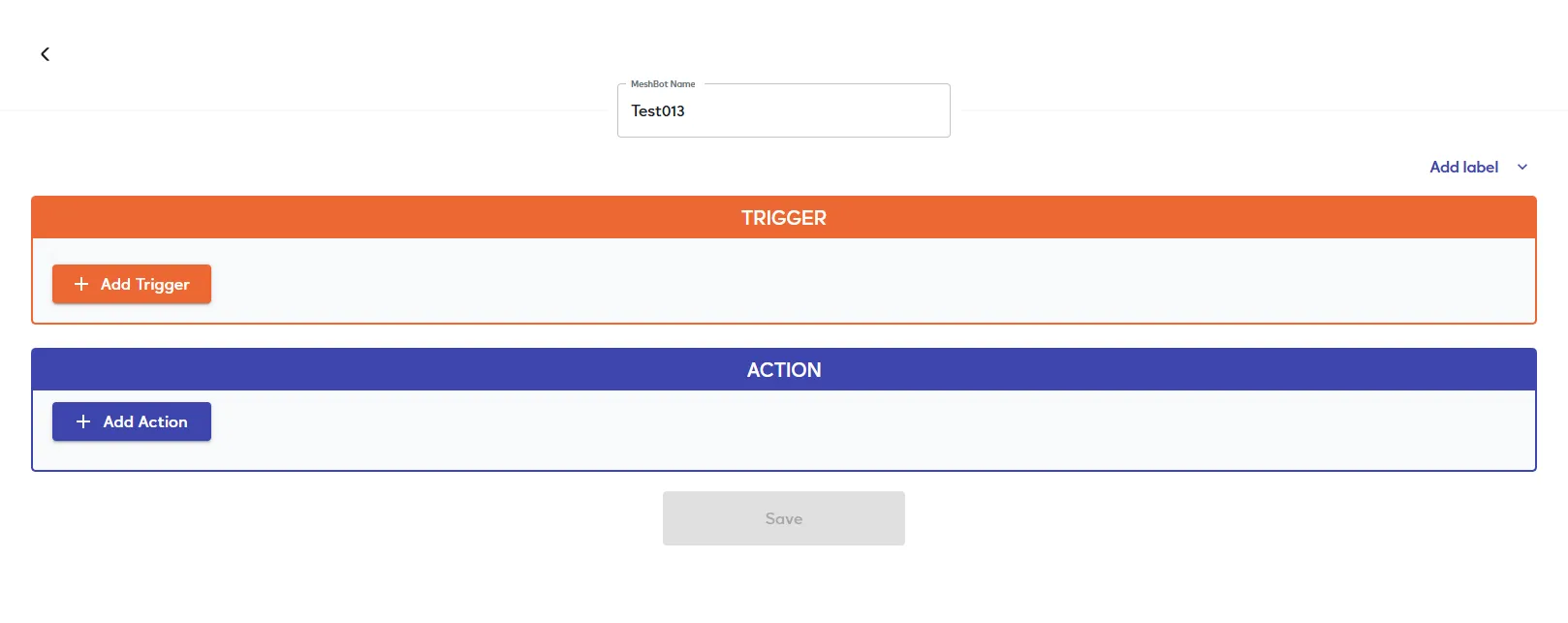
- In the trigger tab you can set the TRIGGER for your device and in the ACTION tab you can set the action to be performed based on the trigger which you have created.

- Set these values in the TRIGGER section.
- Set Node Type to Device.
- Set the Node to Current Sensor.
- Set the Capability to parent_abstract.
- Set the variables to uuid.
- Set the Comparator to Greater (>).
- Set the Value Type to value.
- Set the value to 0.3.
- Set these values in the ACTION section.
- Set Controllable Type to Device.
- Set the Controllable to LED 3.
- Set the Capability to power_command.
- Set the Value Type to set.
- Set the value to true.
- Now Click the Save button.

- After clicking the save button you can see this screen on the top right corner of the screen.

- Here, you can see your saved MeshBot. Now click on Dashboard.
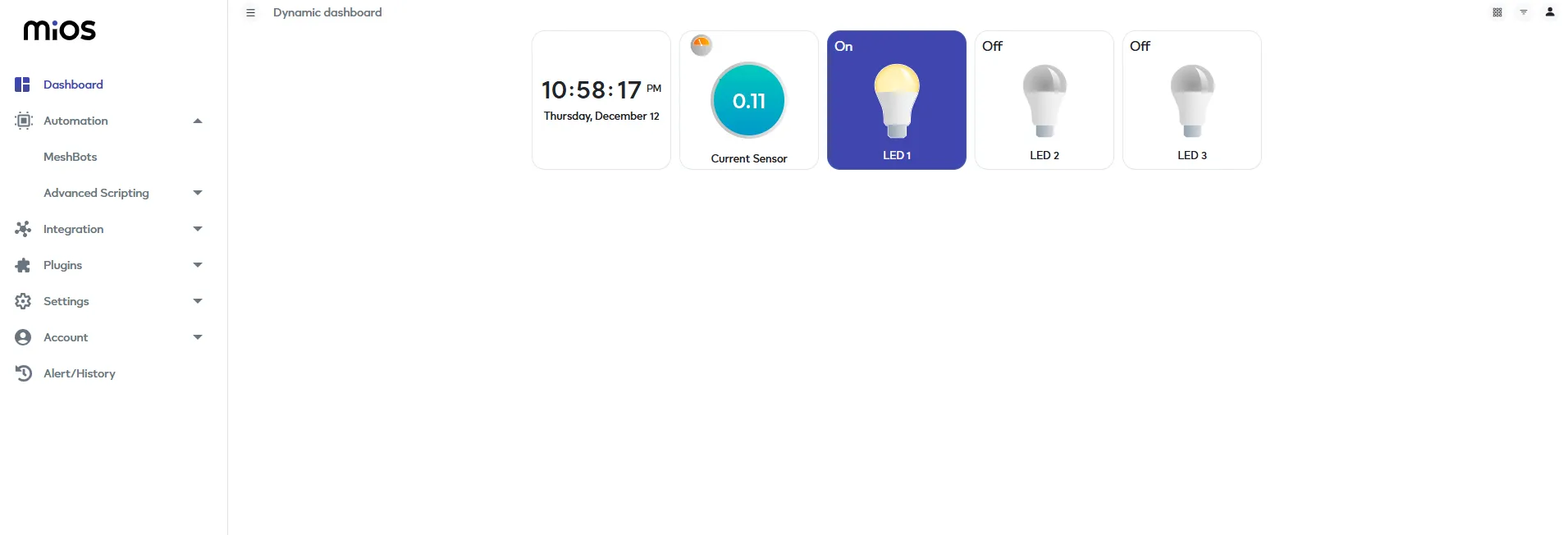
- Now in the MiOS web dashboard, we can see the value of the current sensor and also the tiles of 3 LEDs. Here, we want to indicate certain thresholds of current by turning ON the LED 1 only, this logic is made in the meshbot.

- Now in the above picture, we can see that when the value of current is above a certain value then two LEDs turn ON because of our meshbot settings.
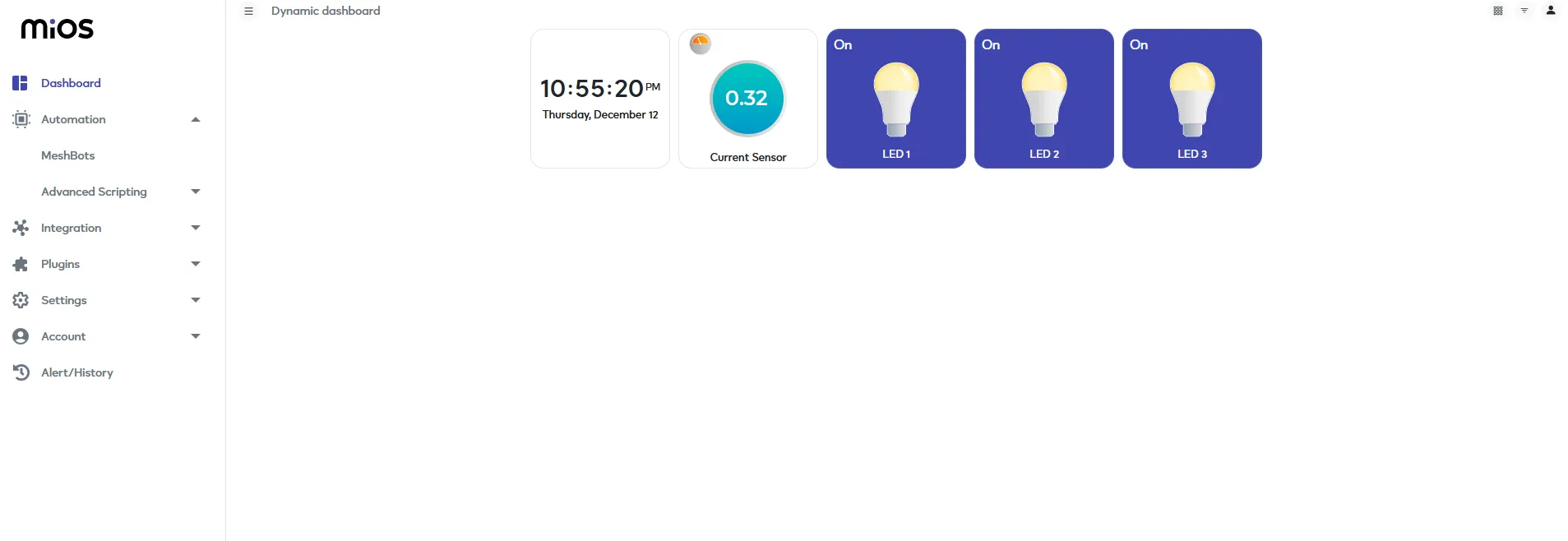
- Here in this picture, we can see that when the current sensor value is above a certain level then all three LEDs turn ON because of our setting of meshbot.
6. MiOS App
You can download the MIOS Android app from the Google Play Store and Apple App Store.
- After downloading the app, proceed to install the application and open it.
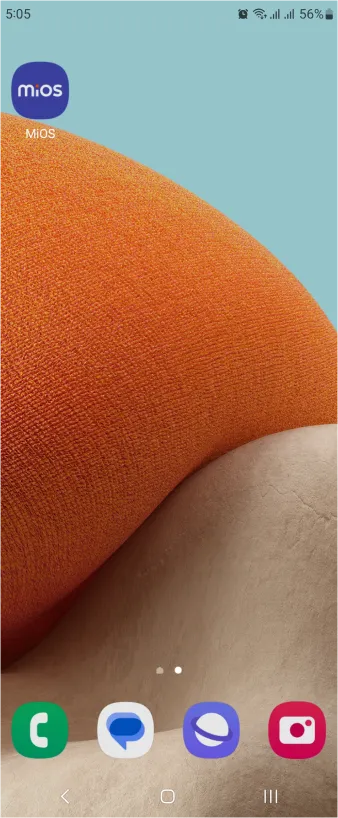
- Using the MIOS mobile application, create a new Ezlo Cloud account using the sign-up option. If you already have an account, you may proceed to log in.
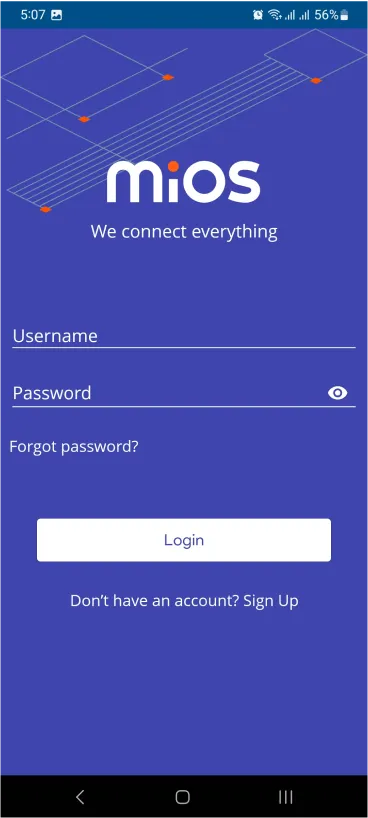
- After successfully logging in, you will be able to see the number of controllers connected such as a lamp, fan, or any other device in the MiOS app. Tap on any controller of your desired ID:
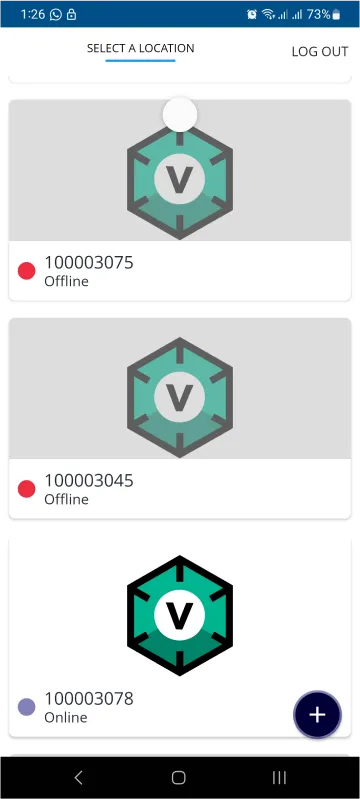
- You will be able to see the status of your controller whether it is online or offline. Access the device dashboard, and tap the device. The following view of the dashboard will appear:
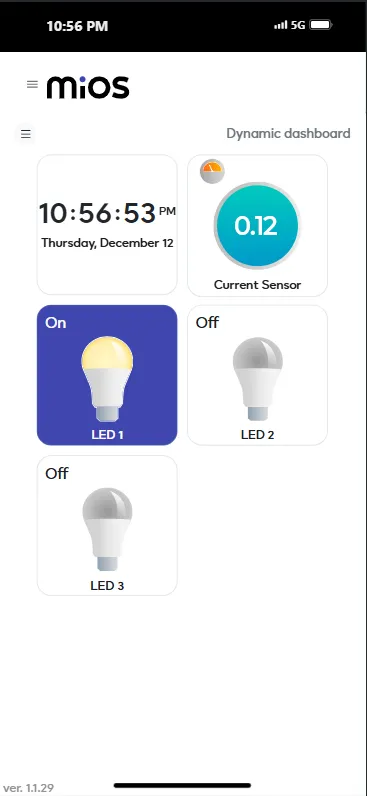
- Here, as seen above on the MiOS mobile dashboard, we can see the value of the current sensor and also the tiles of 3 LEDs. Here, we want to indicate a certain level of current threshold by turning ON the LED 1 only, this logic is made in the meshbot.
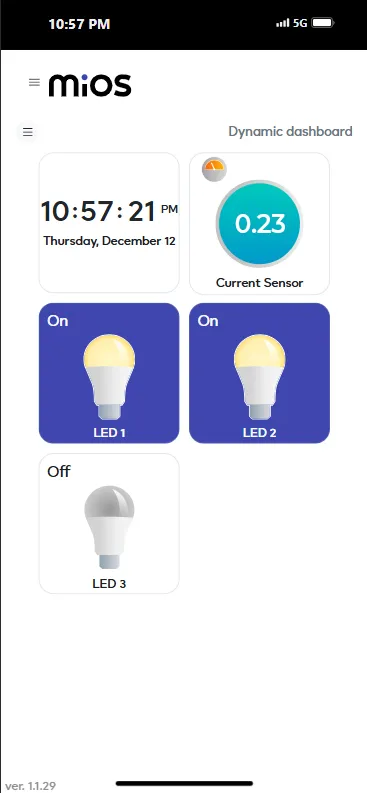
- Now in the above picture, we can see that when the value of current is above a certain value then two LEDs turn ON because of our meshbot settings.
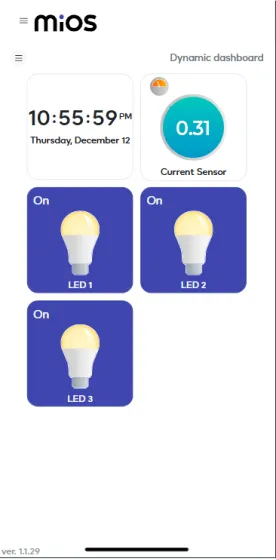
- Here in this picture, we can see that when the current sensor value is above a certain level then all three LEDs turn ON because of our setting of meshbot.

eZlopie Products A single-channel 5V relay module $00.00

eZlopie Products Momentary switch $00.00

eZlopie Products Level Shifter Module (BSS138) $00.00

eZlopie Products ESP32
$00.00

eZlopie Products AC Lamp and Holder
$00.00











